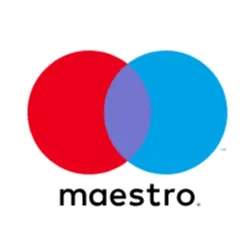| Payment type |
Cards |
|---|---|
| Channel | Online In person |
| Register of Region | US |
| Support of Region | Netherlands, Finland, Iceland*, Greece, Ireland, Luxembourg, Cyprus, Estonia, United Kingdom, Norway, Slovakia, France, Sweden, Italy, Belgium, Poland, Croatia, Lithuania, Denmark, Slovenia, Latvia, Romania, Spain, Austria, Hungary, Czech Republic, Switzerland, Germany, Portugal,United States,Brazil |
| Settlement currency | All supported currencies |
| Payment Cost |
Maestro is a debit card product from Mastercard. Maestro cards can be used for in-store payments and ATM withdrawals. This payment method requires online electronic authorization for almost every transaction, although Mastercard's rules only allow minimum limits for Maestro EMV chip transactions.
Mastercard has decided to transition its Maestro-branded payment cards to Mastercard Debit in the European Union. This means that over the next few years, all Maestro-branded cards will be replaced by Mastercard-branded cards in all product categories: consumer debit cards, consumer prepaid cards, consumer credit cards, and commercial cards.
Starting July 1, 2023:
- Mastercard will no longer issue Maestro-branded cards. All new, renewal, and replacement Maestro-branded cards will be replaced by Mastercard products
- Banks and other credit card issuers will no longer issue Maestro cards. Instead, they will need to issue a debit Mastercard
- Debit Mastercard will become the most common replacement for Maestro as it can be used wherever it is accepted online and offline
- All acquirers are advised to help ensure Mastercard products are ready for acceptance by this date.
New, renewal and replacement Maestro cards issued before July 1, 2023, can remain in circulation and continue to work until they expire. This means that Maestro cards will still work until 2027 at the latest.
Why replace Maestro with Mastercard?
Maestro is one of the most well-known payment card brands under Mastercard. The card was launched in 1991, when the internet was just beginning. Maestro was the world's first point-of-sale (POS) debit card that could be used anywhere in the world via an online network. There are approximately 400 million Maestro cards in circulation worldwide as a mass-market debit card product. The card is particularly common in Europe, with the main markets being Germany, Italy, the Netherlands, Belgium, Switzerland and Austria.
Despite its popularity, Maestro was a product of its time, when online shopping was not mainstream. It was primarily targeted at traditional commerce, meaning face-to-face, physical, real-world commerce. As a result, a large portion of Maestro cards were simply not usable for e-commerce, and cardholders could not always use them for online and in-app payments.
Today’s consumers have become accustomed to the convenience and personalization of a digital-first world. The COVID-19 pandemic has only accelerated this process. Since Maestro could no longer provide cardholders with the functionality they needed, it made sense to transition the product to one that could. The Mastercard network is twice as large as Maestro, providing even more possibilities for e-commerce transactions. As Valerie Nowak, Executive Vice President of Product and Innovation at Mastercard Europe, said:
“As the world continues to rapidly shift from physical to digital, consumer needs and behaviors are changing, and our goal is to provide people with convenient and secure ways to shop.”
- All Reviews(0)
- Payment Proofs
- Questions
Subscribe to Our Newsletter
Apple Pay @ver8225
If conditions permit, I like to use Apple Pay. In theory, NFC is the most secure. And you only need to press twice and touch Face ID. It is also very convenient online. Meituan, Didi and Duoduo all use this.
PayPal @Daniel
I've been very happy with ClickDealer. They’ve been around for a while, and have some great offers that you usually can't find anywhere else. I would definitely recommend them to anyone!
